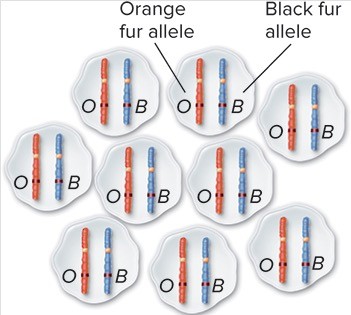Populations of two coexisting species are both tertiary consumers in a community. What relationship may exist between these two organisms?
A) predation
B) mutualism
C) competition
D) succession
C
You might also like to view...
How are trypanosome diseases similar to malaria?
A) They are transmitted by insect vectors. B) They cause intermittent fevers. C) They are acute, self-limiting diseases. D) They are all endemic to Africa.
Which of the following statements is true regarding T cell receptors? Select all correct
A. They recognize antigen-MHC complexes. B. They contain variable and constant regions. C. They are composed of two heavy (H) chains and two light (L) chains. D. They are formed by the rearrangement of V, J, C, and D gene segments. E. They can be found in the bloodstream independent of T cells.
Autotrophs that utilize light as their energy source are
A) chemosynthetic autotrophs. B) photoautotrophs. C) fungi. D) heterotrophs.
In cats, the gene for coat color is found on the X chromosome. Shown below is a mass of cells making up an early female cat embryo. The X chromosomes are shown in each cell; this embryo has one orange coat color allele (O) and one black coat color allele (B). Which of the following is ACCURATE about this embryo? 
A. Since it is heterozygous, it will give rise to a calico cat with two Barr bodies in each cell. B. It will give rise to an orange cat, as the paternal chromosomes carrying the black allele will be inactivated. C. It will give rise to a black cat, because black is dominant to orange. D. It will give rise to a calico cat. E. Since it is heterozygous, it will give rise to a cat with two Barr bodies in each cell.